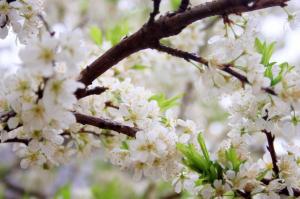When to Plant Perennials in Zone 5
Introduction
Perennial plants are a great addition to any garden. Unlike annuals, which only last for one growing season, perennials can come back year after year. But when is the best time to plant perennials in zone 5? In this article, we will discuss the optimal planting time as well as some tips to ensure your perennials thrive.
The Best Time to Plant Perennials in Zone 5
The best time to plant perennials in zone 5 is in the fall. This is because the soil is still warm from the summer, which encourages root growth, and the cooler weather means less stress on the plants. Planting in the fall also gives the perennials time to establish themselves before the harsh winter weather sets in.
However, if you miss the fall planting window, the next best time to plant perennials in zone 5 is in the spring. It鈥檚 important to wait until the threat of frost has passed, usually in mid to late May, before planting any perennials. Planting in the spring also means you鈥檒l get to enjoy the flowers sooner.
Tips for Planting Perennials
1. Choose the right location. Perennials do best in areas with well-draining soil and plenty of sunlight. Make sure to read the plant care instructions before planting to ensure you鈥檝e chosen the right location for each plant.
2. Prepare the soil. Before planting, make sure to prepare the soil by removing any weeds or debris and adding in some compost to improve drainage and fertility. This will create a healthy environment for your perennials to thrive.
3. Dig the right size hole. When planting, make sure to dig a hole that is deep enough to fit the entire root ball without bending or breaking any of the roots. The hole should be wide enough to allow the roots to spread out.
4. Water immediately after planting. After placing the plant in the hole, water it immediately to help settle the soil and remove any air pockets around the roots. Water regularly for the first few weeks until the plant is established.
5. Mulch around the plants. Mulching helps to retain moisture in the soil, suppress weeds, and regulate soil temperatures. Apply a 2-3 inch layer of mulch around the base of each plant.
Conclusion
Perennials are a beautiful and low-maintenance addition to any garden. By planting them in the fall or spring and following the tips outlined above, you can ensure that your perennials thrive and provide years of beauty for you to enjoy.

 how many times do yo...
how many times do yo... how many planted tre...
how many planted tre... how many pine trees ...
how many pine trees ... how many pecan trees...
how many pecan trees... how many plants comp...
how many plants comp... how many plants can ...
how many plants can ... how many plants and ...
how many plants and ... how many pepper plan...
how many pepper plan...






























